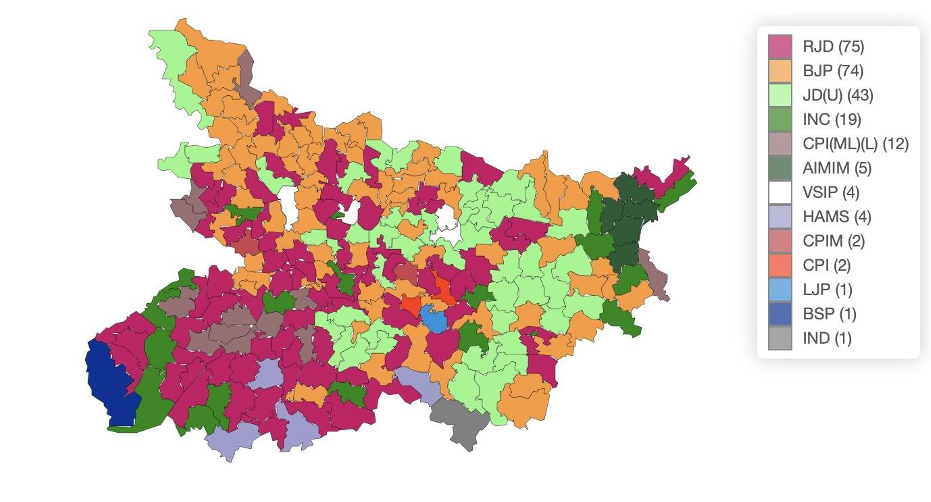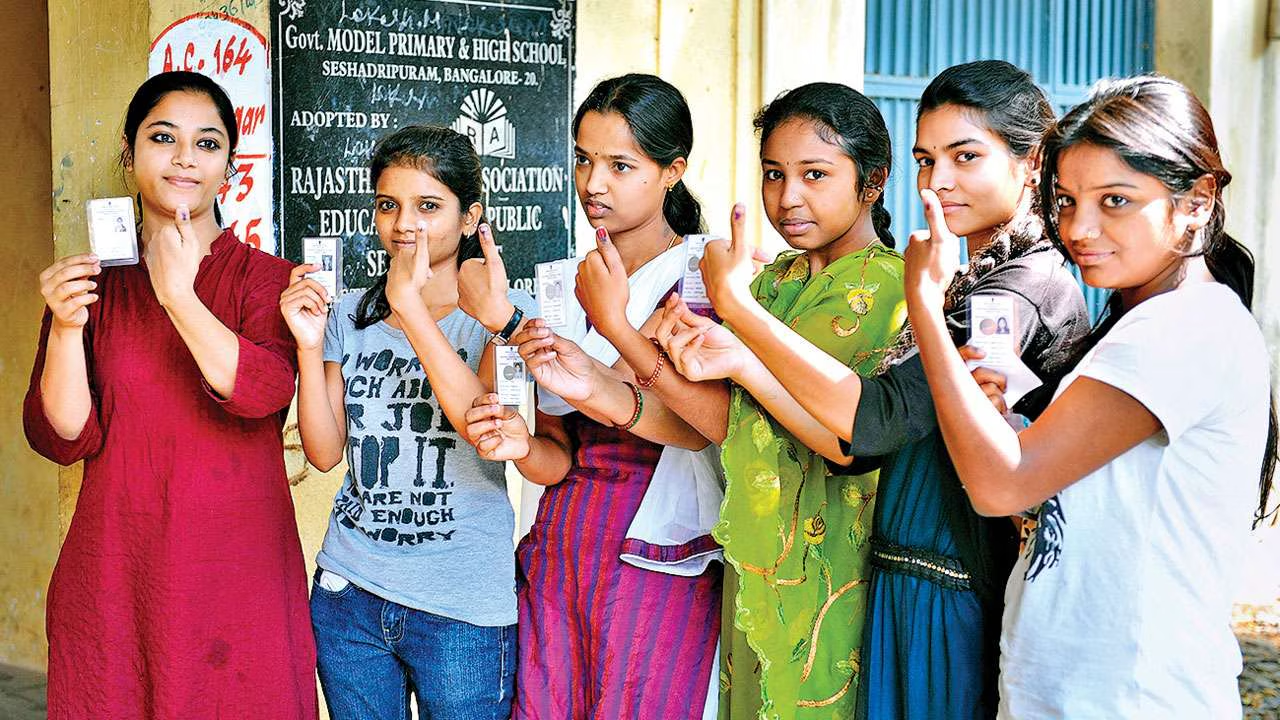8 November 2025, NIICE Commentary 11898
Sidhant Kumar
The Bihar elections are the most vibrant and are closely watched by people across the country, as well as in the neighbourhood. Gen Z protests in Nepal, which helped root out its corrupt regime, have certainly energised the youth in Bihar and are likely to impact electoral outcomes, albeit minimally.
Youth in Bihar are concerned about jobs and skilled education, much like their counterparts in Nepal. College-going boys and girls in Bihar want to change the status quo, including the incumbent Nitish Kumar-led National Democratic Alliance (NDA) government. A youth voter who just cast her vote in the first phase of polling told me that she has voted for the Jan Suraaj Party candidate, which firmly stands for jobs and education.
Tejashwi Yadav of the Rashtriya Janata Dal (RJD) is also whipping up this youth vote base. In a video released on the eve of the Bihar elections on November 6, Yadav was seen appealing to the youth to remain vigilant at the polling booths. Prime Minister Narendra Modi, during his visit to Manipur in September, publicly appreciated the efforts of the youth in Nepal for the first time and praised their positivity and work in picking up the pieces in the aftermath of the upheaval in Nepal.
21 constituencies of Bihar border Nepal. In the 2020 Bihar assembly elections, 16 of the seats were won by the incumbent NDA, while the RJD won three and the Congress party none. Both CPI-ML and AIMIM won one seat each.

Picture 1: Constituency-wise winning party, 2020 Assembly Elections, Source: Lok Dhaba
The border constituencies of Bihar are also among the backwards regions in Bihar, with limited industry and credible educational institutions. Generally, youth from Bihar migrate to urban centres for education and jobs.
In September, 75 people died in two days of vitriolic carnage that saw the murder of 22 protesters and the indiscriminate lynching of police personnel in Nepal. Inside Birgunj, a border town in Nepal, there is an uneasy calm. The Municipality office was torched, and the offices of major parties were burnt. “The value of people’s lives in Nepal has decreased”, said a businessperson sitting at the gate of Maisthan temple, a bustling centre of gold shops and worship, in Birgunj.
The most visible impact of the Gen Z protests was evident in the quotidian lifestyle of border communities, livelihoods, and cross-border illicit activities. Life at the borders has an everydayness to it. People from the Indian side of the border flock to the border each morning to sell essential goods daily in Birgunj. Most importantly, the Raxaul-Birgunj corridor accounts for the transit of two-thirds of Nepal’s trade. Not to mention the various unaccounted goods and people flows that are important for livelihoods on both sides of the border.
When I visited the border, in the aftermath of the Gen Z protests, a man on a bicycle with bundles of Lays chips was labouring across the Maitri Bridge at the Raxaul-Birgunj border to reach Birgunj, as throngs of people crossed the border on either side. Women from the Nepali side descended on Raxaul during the festive season to purchase its inexpensive clothes.
On the Bihar side of the border, it’s business as usual. Malls and shopping centres have come up just 100 metres from the Maitri Bridge at the Raxaul-Birgunj border to cater to Nepalese shopping sprees. Although sales have decreased due to the Gen-Z rebellion, the shopowners are not as concerned. The businesses on the Raxaul side have witnessed Nepal’s numerous political upheavals and have learned to absorb the sales shocks that emanate from Nepal.
Experts in India have raised eyebrows that the instability in Nepal might become the breeding ground for unruly elements and terrorist networks to flourish, particularly around the Bihar side of the border. Experts say that the impacts will also be seen in the quotidian border crossings and terror linkages.
Historically, the Nepal-India border has been a breeding ground for several armed groups during India’s independence movement, including the Azad Dasta, which was formed in Nepal by the Indian socialist Jayprakash Narayan. In the 1950s, the Nepal National Congress undertook several guerrilla attacks against the monarchy in Nepal through this border in their fight against the autocratic Rana rulers. Former Prime Minister of Nepal, B.P. Koirala, and his aides carried out a clandestine rebellion against the Ranas, which they continued when King Mahendra disbanded the first democratically elected government of B.P. Koirala in 1960.
During the Maoist insurgency in Nepal, the Maoists crossed borders and tried to establish contacts with the Naxal movement underway in Bihar. The Bihar and West Bengal-based left extremists (naxalites) have also sought shelter in Nepal. Ideological extremism has receded on both sides of the border, but for New Delhi, the instability and the open border are a conduit for unruly elements.
Whereas Nepal, in the imagination of the people, is much more intimate than New Delhi allows itself to be. Matrimonial ties and livelihoods have built the intimate ties between Nepal and Bihar. Political leaders of Nepal, including D.R. Regmi, who received his PhD from Patna University and Nepal’s first democratically elected Prime Minister, B.P. Koirala, were socialised in the political scene of the Indian anti-colonial struggle.
However, the influence of Gen Z protests on the minds of people in Bihar seems to be missing. For businesspeople in Bihar, political instability in Nepal has become a nuisance. A cross-border solidarity is also missing in the Nepal situation. The Bihar elections around this time are as electrifying as ever, and youth and women hold the key to the fate of the elections.
Sidhant Kumar is a Visiting Fellow at NIICE and a PhD Candidate at Jawaharlal Nehru University, New Delhi, India.

